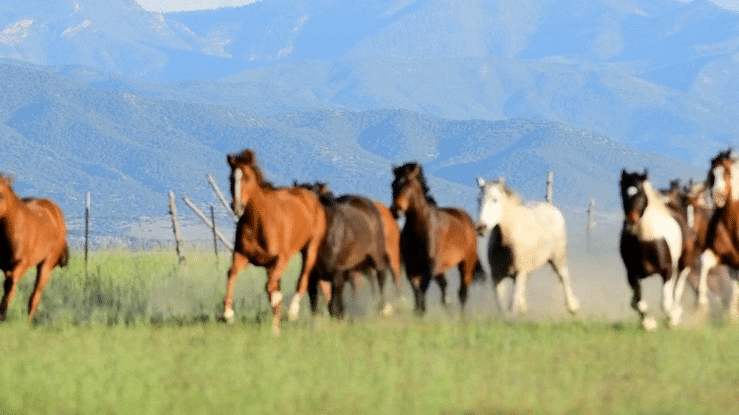
Jun 02, 2022 Wildlife Fertility Control: An Alternative to Lethal Management of Wildlife
The first international conference on wildlife fertility control was held in Philadelphia in 1987. Subsequently, approximately one such event has been organized every four years (the 9th conference being held 35 years after the first). In 2017 and 2022, the Botstiber Institute for Wildlife Fertility Control (Institute) organized the most recent two meetings. The Institute is a new initiative of the Botstiber Foundation in Philadelphia, whose trustees decided to establish a specific program on wildlife fertility control. They founded the Institute in 2016 in partnership with the Humane Society of the United States. While the conference featured the customary talks on wild horse contraception and urban deer, it also included more diverse discussions. For example, topics included pigeon control, contraception attempts of hippopotami in Colombia (escapees from a zoo set up by drug kingpin Pablo Escobar), grey squirrels in the UK, kangaroos in Australia, and baboons in South Africa.
Efforts to control wildlife populations via contraception are relatively recent and have proved to be surprisingly controversial. For example, Australia has a population of wild horses (known as “brumbies”) that inhabit various landscapes, including Kosciuszko National Park in New South Wales. Kosciuszko encompasses a variety of sensitive mountain biomes, and multiple reports conclude that the brumbies threaten those biomes and the endemic native animals they support. Even scientists who promote and adhere to a position known as Compassionate Conservation have concluded that contraception and fertility control is not an appropriate option for managing these horses. Lethal control (aerial shooting) of wild horses (brumbies) has been proposed to protect the fragile (Alpine) environments in Kosciuszko. Still, there is widespread public opposition to such an approach, and the conference heard (via remote video) from an Australian Member of Parliament who opposed the brumby culling.
The opposition in Australia to lethal control of wild horses mirrors the US debate on equid management. There is widespread US public support for wild horse populations in the United States for similar reasons to Australia. The equid populations are the descendants of the horses who provided significant support for the European colonization of both countries. There have been several efforts to promote non-lethal control options in Australia but, so far, with limited success.
Hunting lobbies view contraception or sterilization to control horse and deer populations as a threat in the US. Nevertheless, fertility control has been successfully applied in some communities where the local authorities have balked at permitting hunters to shoot deer (either with guns or arrows) in dense suburban developments. Two talks at the Botstiber conference addressed such deer population control projects in the New York borough of Staten Island and the New York suburb of Hastings-on-Hudson. Both talks commented on community concerns about lethal population management and why community managers opted for non-lethal fertility control.
The management of wild horses has also driven considerable innovation in wildlife fertility control. The recent conference included talks by several speakers on the topic. David Jenkins, Assistant Director of Resources and Planning at the Bureau of Land Management (BLM), described the BLM’s challenges in managing wild horses and burros on Western ranges. The numbers are undoubtedly impressive. There are approximately 300,000 wild equids (of which 82,000 are horses) on 177 horse management areas (HMAs) encompassing 30 million acres (120,000 square kilometers) of primarily arid or desert landscapes in the Western United States. The BLM estimates that the existing HMAs could support a healthy horse population of fewer than 30,000 animals. Wild horse advocates have recently united behind fertility control (reversible contraception) technologies to manage such animals, but the BLM has been very slow to embrace the available contraceptive options. Contraception on a sufficiently large scale to have a meaningful impact is finally part of wild equid management. However, helicopter gathers are still a core technique for gathering the horses, despite being expensive and dangerous for the horses.
One presentation described a fascinating invention Roch Hart of Wildlife Protection Management developed to address the challenges of vaccinating wild equids in very open desert landscapes. It is a solar-powered device that microchips horses (for later identification) and immunizes them remotely with an appropriate fertility control agent. The device is placed in the horses’ arid areas and baited (with alfalfa). The microchip data are read while the horse is feeding, and the device determines if the horse should be boosted or left alone. The device also collects health data (e.g., body temperature) from the horses. Hart noted that he now has 80,000 data sets from around 50 wild horses. The device answers the general complaint about the difficulty (impossibility?) of contracepting horses in open desert landscapes and produces bonus data on the health status of wild horses.
The conference also featured presentations on elephant and pigeon population control and the contraception of hippopotami in the Magdalena River valley in Colombia in South America. Pablo Escobar, a drug kingpin, built a zoo in Medellin in Colombia and, in 1981, imported four hippos (one male and three females) for his zoo. Escobar was killed in 1993. Most of the zoo animals were removed, but the hippos remained and thrived in the surrounding wetlands and pools of the Magdalena River. There may now be more than 100 Colombian hippos. Public outrage and demonstrations resulted when the Colombian army killed a hippo because it was deemed dangerous. The government then passed legislation to protect the hippos. However, there are now concerns about the potential environmental impact of this invasive species. Animal Balance, a US NGO, is currently working on a non-lethal solution to the hippo problem using fertility control.
The availability of non-lethal fertility control technologies to manage invasive and endemic species populations is changing the debate on wildlife management. As more non-lethal technologies become available and demonstrated to control wild animal populations, non-lethal management will likely become the preferred option around the globe.


